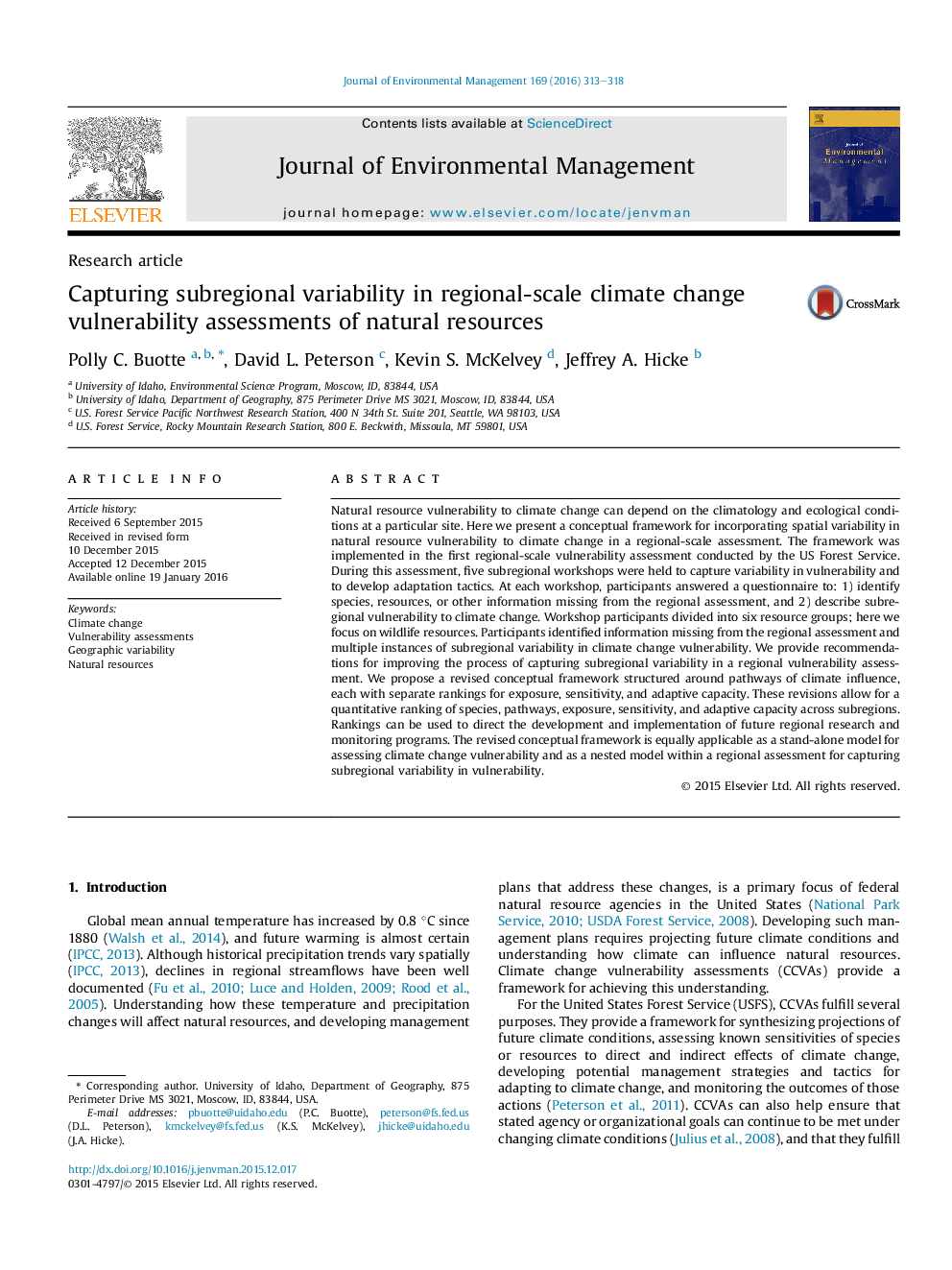| کد مقاله | کد نشریه | سال انتشار | مقاله انگلیسی | نسخه تمام متن |
|---|---|---|---|---|
| 1055462 | 1485243 | 2016 | 6 صفحه PDF | دانلود رایگان |
• Vulnerability of natural resources to climate changes varies geographically.
• Regional climate change vulnerability assessments can capture spatial variability.
• Subregional workshops to elicit expert opinion of local vulnerability are critical.
• Pathways of climate change provide an intuitive structure to capture variability.
Natural resource vulnerability to climate change can depend on the climatology and ecological conditions at a particular site. Here we present a conceptual framework for incorporating spatial variability in natural resource vulnerability to climate change in a regional-scale assessment. The framework was implemented in the first regional-scale vulnerability assessment conducted by the US Forest Service. During this assessment, five subregional workshops were held to capture variability in vulnerability and to develop adaptation tactics. At each workshop, participants answered a questionnaire to: 1) identify species, resources, or other information missing from the regional assessment, and 2) describe subregional vulnerability to climate change. Workshop participants divided into six resource groups; here we focus on wildlife resources. Participants identified information missing from the regional assessment and multiple instances of subregional variability in climate change vulnerability. We provide recommendations for improving the process of capturing subregional variability in a regional vulnerability assessment. We propose a revised conceptual framework structured around pathways of climate influence, each with separate rankings for exposure, sensitivity, and adaptive capacity. These revisions allow for a quantitative ranking of species, pathways, exposure, sensitivity, and adaptive capacity across subregions. Rankings can be used to direct the development and implementation of future regional research and monitoring programs. The revised conceptual framework is equally applicable as a stand-alone model for assessing climate change vulnerability and as a nested model within a regional assessment for capturing subregional variability in vulnerability.
Figure optionsDownload as PowerPoint slide
Journal: Journal of Environmental Management - Volume 169, 15 March 2016, Pages 313–318
